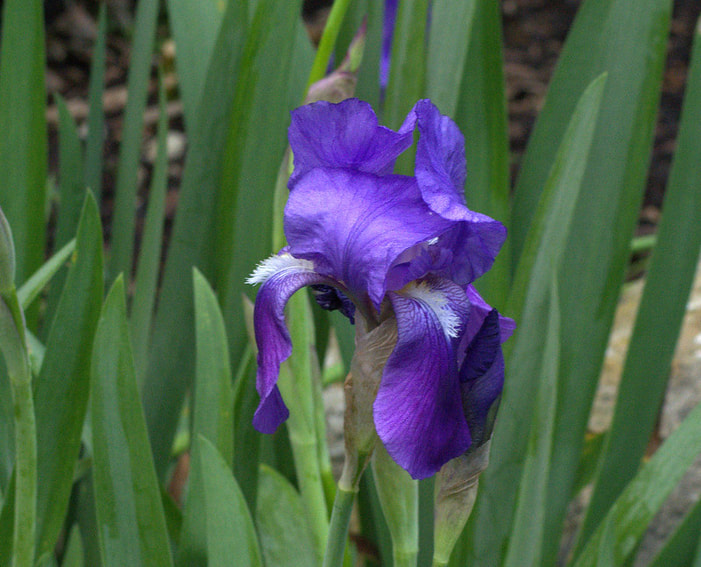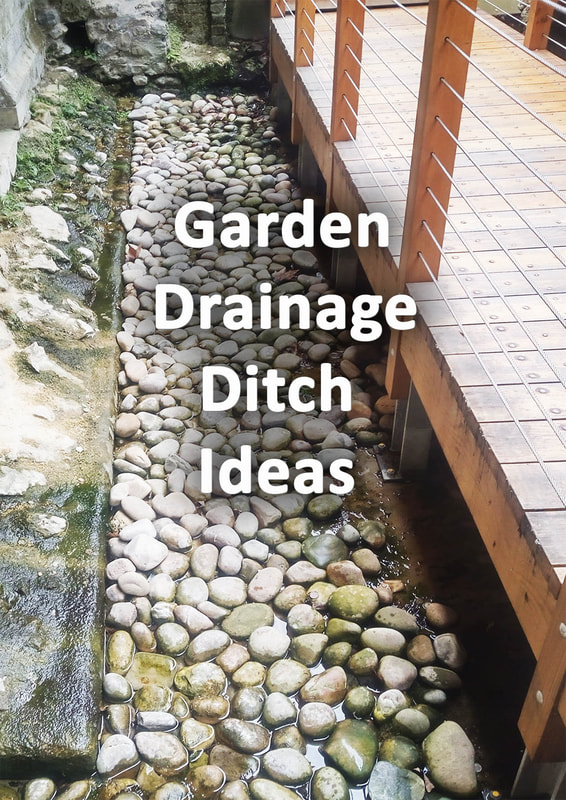|
This article contains affiliate links
Growing the plants you love is one of the many joys of gardening. However like us plants need suitable conditions to thrive and flourish. A fundamental component of this depends on having optimal soil conditions.
One of the biggest components of a soils health is drainage and saturation levels. Most gardens moisture content will fluctuate throughout the year. However a soil which becomes too waterlogged can be detrimental to plants. Boggy soil can lead to root rot and stagnant ground. Garden drainage problems can gradually get worse over time or appear out of the blue. Over development and a love of maintenance free landscaping has led to much more surface run off. This means over time garden soils have had to cope with increasing levels of saturation. If your garden has experienced drainage problems you will need to improve drainage for plants. In this article we list and explain how to improve drainage for plants in your flower borders. Assess your drainage problem
One of the best starting points for solving garden drainage problems is diagnosing the issue. It is important to find out why you’re experiencing water logging so you can focus your efforts. Do you live in a flood risk area or one with a high water table? If so have you experienced a period of particularly heavy rainfall? Normally in such circumstances this is consistent with the natural hydrology of your site. In such a circumstance installing a garden drainage system or raising growing areas will help. If you have experienced a sudden localised area of flooding it could be a ruptured pipe.
Have your neighbours undergone any building work or landscaping work recently? If so level changes and increased impermeable services could be affecting your drainage.
The best way to assess your drainage problem is study the surrounding landform. This also includes neighbouring gardens and your specific locality. Does surface water become channelled towards you in times of heavy rain? Do you have enough soft landscaping to absorb the runoff from patios and other impermeable surfaces? If not you may need to install a garden soakaway. Assessing a gardens drainage problem can take some detective work. However by assessing such factors logically an accurate diagnosis is normally very achievable. Re-levelling
One of the most common reasons for water logging is a gardens surface levels. Even moderate level changes in surrounding properties can lead to drainage issues. This is also the case on your own site. It is very common for low spots and divots to become compacted and impervious overtime. Such levels are even more of a problem if you have clay soil. Try to work out where water naturally wants to flow to on your site. This will usually be at the lowest end, is a pathway helping to dam ground water from flowing down hill? You will need to eliminate or fill in any low spots which are helping to retain surface water on your site. Most of the time improving garden drainage for plants will rely on re-levelling. This will involve raising low areas and grading your ground to a flush and even gradient. This will allow water to run off to the lowest point easily. If your garden is particularly low and boggy at one end you may also need to install retaining garden edging. Install a garden drainage system
If you are serious about improving drainage for garden plants then you cannot beat a garden drainage system. A good system will draw out water from waterlogged ground and divert it into a destination drain. The most typical garden drainage systems consist of a series of drainage channels. These consist of perforated pipes encased within free draining gravels. These enable ground water to seep into the channels and away via the perforated pipes. Drainage channels are then plumbed into a soakaway system which consists of a large void under the ground.
Plastic drainage crates are slotted together to form a 1 metre cube wrapped in filtration membrane.
Soakaways provide somewhere for water to run and gradually be reabsorbed by the surrounding ground. Such drainage systems are normally the most effective solution for garden drainage problems. For more information on drainage channels why not read our article on the subject here. If you need instructions on how to install a garden soakaway visit our step by step resource. Double digging
Double digging is a method of soil improvement which involves excavating the soil deeply. A trench is dug two spade depths (or spits) deep to break up the subsoil’s hard pan. The hard pan is a compacted layer of soil which lies about 400 millimetres deep under the surface. Organic matter such as manure is then laid in the base of the trench and then back filled. This system is repeated throughout the whole plot until the border is completed. This process allows water to permeate the ground more deeply improving drainage for plants. The laid manure provokes plants to set their roots down deeply leading to more robust root systems. This can lead to more moisture uptake through transpiration. The general soil improvement brought about by double digging greatly improves drainage for plants. Organic matter
Organic matter greatly improves the quality of topsoil in a number of ways. Firstly, the more organic material which is added to the soil the more it feeds soil ecosystems. Billions of microscopic organisms contribute to soils fertility and aeration. These help to break up soil particles and increase air pockets. A healthy amount of soil life will lead to greatly improved drainage and soil fertility. Digging organic matter into the ground also reduces soils ability to stick together and form clods. This reduces the threat of compaction and the soil forming a capping layer. Such action leads to much better soil permeability and will greatly improve drainage for plants. Organic matter can include compost, bark chippings, sawdust, leaf mould and well rotten manure. Sand & Grit
Fine and course aggregates such as sharp sand and horticultural grit are very effective for improving drainage for planting beds. When thoroughly mixed with soil they help to break apart clods and form a loose structure. As sand and grit does not absorb water it leads to lower moisture content within the soil. This combined with a looser structure allows water molecules to trickle through easily. The improved water penetrability leads to much better drainage for garden plants. However it will be important to add enough material to make a difference. Really a minimum of 2 inches (or 50mm) of material should be added to the surface to be effective. The material must also be very well mixed into the structure of the soil. This is best achieved with a powerful rotavator or tiller during warm and dry conditions. Mulching
Mulching is a great way to improve general soil quality over time. The mulch forms a protective layer over the soil and reduces the impact of seasonal weather extremes. Mulching reduces exposure to frost in winter and excessive heat and cracking during the summer months. Such conditions lead to healthy and vibrant soil ecosystems. The microorganisms within soil help to improve its structure by increasing fertility and increasing air pockets. This maximises the soils ability to drain well providing optimum conditions for plants. Mulch also helps to reduce compaction by providing a spongy surface to heavy loads. The organic matter also makes it easier for moisture to evaporate from the soils surface. Build raised beds
Raised beds are the ultimate way to improve drainage for plants. In very boggy gardens raised beds allow you to distance the plants roots from sodden ground. Furthermore, the extra height that raised beds provide allows you to add better quality topsoil. This leads to generally healthier and happier plants. Not only can raised planters provide well drained conditions where they lie, they can also improve a gardens drainage holistically. Topsoil is nature’s way of absorbing excess rain water! When gardens become boggy it is because there is a higher ratio of water run off to topsoil. Raised volumes of topsoil provide your garden more potential to absorb rainwater. This leads to less water logging and greatly improves drainage for plants. Species selection
Just as in nature plants thrive in a variety of conditions and habitats. To provide the best conditions for your plants try to select species suited to your gardens conditions. If you do have naturally moist conditions it can be beneficial to select species which enjoy moist soil. Understanding what plants to plant where is typically the best route to successful gardening. This will lead to happier and healthier garden plants without having to change your garden too much! Garden drainage services & drainage contractors in BuckinghamshireBuckinghamshire landscape gardeners are experts in garden drainage and provide a number of garden drainage solutions. Our garden drainage services include;
Our garden drainage services cover most of Buckinghamshire including:
Thank you for reading our article on how to improve drainage for plants. For more garden drainage solutions why not check out some of our other articles below.
We have included a basket of garden drainage articles including how to install garden drainage systems. If you require professional landscaping and garden drainage services do not hesitate to contact me.
'As an Amazon associate I earn from qualifying purchases'
1 Comment
|
The Author
|
Landscaping services across Buckinghamshire, Amersham, Aylesbury & High Wycombe
Hyde Heath, Amersham, Buckinghamshire |
|





























